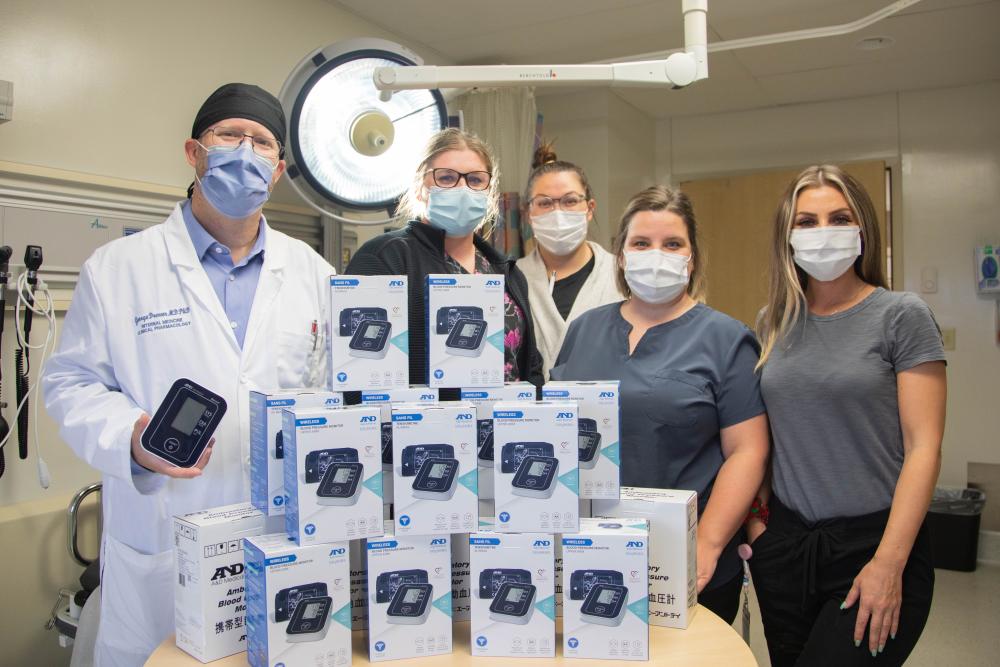
Spurred by the pandemic to explore virtual care opportunities, London Health Sciences Centre’s (LHSC) hypertension clinic is embracing the new wave of patient care with its remote blood pressure monitoring program—a library of machines for patients to self-monitor, free of charge, in the comfort of their own home.
For the past 22 years, clinical pharmacologist Dr. George Dresser has been running a hypertension clinic out of LHSC, treating patients from London, Windsor, Kitchener and as far north as Owen Sound. Furthermore, with over 1,000 patients who come through his clinic each year requiring care and observation, the pandemic revealed an immediate need to provide better remote blood pressure monitoring for patients outside of the hospital.
“Hypertension Canada has stressed if we're going to make choices about telling a patient to eat less salt, do more exercise, lose weight, or give them more blood pressure medication, we really should be using at-home measurements,” says Dr. Dresser.
To this end, and through the generous support of donors, patients will soon have free access to take-home blood pressure monitors that connect via Bluetooth to smartphone devices.
“This blood pressure library will improve our ability to get accurate home assessments of blood pressure for all our patients,” says Dr. Dresser. “It will eliminate the issue of patients who can’t afford their own personal machine, and it will allow us to see data in a reliable, graphable way.”
Using Canadian-made software, Sphygmo, physicians will be able to see how patients are responding to treatment, analyze data in a variety of formats and better determine next steps for patient care. To alleviate the stress associated with managing the machines at home, Dr. Dresser and his team will also provide personalized training to each patient when loaning out the machines.
“Measuring your blood pressure properly can be challenging,” he says. “But through training, we can quickly get patients managing their blood pressure accurately and stress-free.”
Thought to be the first of its kind in Canada, the library program strives to empower patients to take charge of their health and reduce anxiety related to physically being at the hospital.
“I’m most excited to see the progression in our ability to support the adjustment of medication without the patient ever having to step foot in the hospital,” says Dr. Dresser. “This is where I can see the project making waves in the healthcare industry.”
Being trailblazers in any industry often means having to overcome barriers. Dr. Dresser says having a donor who can help surmount the initial economic hurdle is invaluable.
“For me, the best thing about our donors is how they stimulate good ideas that were previously left unexplored. And often, those same ideas become the gold standard for an initiative moving forward.”